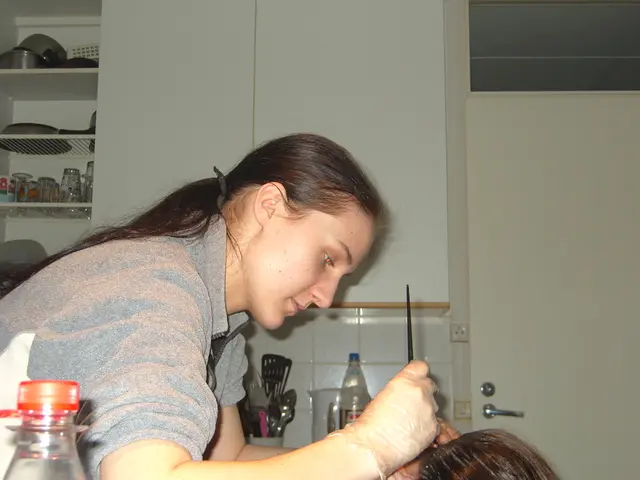Distinguishing between Age Spots and Skin Cancer: Recognizing the Key Differences
Hello there! Let's delve into the world of bothersome blemishes on your skin – age spots and skin cancer. You might have spotted them, as they frequently appear on the parts of your body exposed to sunlight, such as your face, arms, shoulders, and hands.
Recognizing these two conditions can save your skin – and perhaps your life! Key differences between age spots and skin cancer can help you determine whether you should consult a healthcare professional. Check out the texture, color, and spot placement to make an informed decision.
Age Spots
Also known as solar lentigines or liver spots, age spots are tiny, dark patches that are typically flat and smooth. They range in color from yellow, brown, to gray, and they boast clearly defined borders. Most notably, age spots result from increased melanin production to safeguard your skin from the harmful effects of UV radiation. You might observe them appearing mostly on fair skin, though they can develop on any skin tone. Generally, they manifest during middle age and beyond.
On the flip side, skin cancer is a serious concern. Like age spots, skin cancer craves the sunniest spots on your body, thanks to the damage caused by UV radiation from the sun or tanning beds. Skin cancer happens when UV radiation, environmental factors, or genetics damage your skin cells, causing them to multiply rapidly and form malignant tumors. Unlike age spots, skin cancer is harmful and can spread to other parts of your body.
The three primary types of skin cancer are basal cell carcinoma, squamous cell carcinoma, and melanoma. Another skin confusion is actinic keratosis, a precancerous growth similar to age spots.
Skin Cancer versus Actinic Keratosis
Wait a minute! Actinic keratosis may resemble age spots, but it's a precancerous condition. Better keep an eye on these scaly, rough patches, as they can evolve into cancer if left untreated. Actinic keratosis is characterized by red, gray, pink, or skin-colored patches, often cluster-forming, like acne. It can also manifest as scaly, rough bumps or even canvas-like patches on your lips or hornlike growths.
If any new or changing marks on your skin puzzle you, consult a healthcare professional immediately. Prompt detection can lead to more straightforward and effective treatment of skin cancer. And remember, if age spots aren't making you happy, there are several treatments available to help lighten their appearance, like creams, lotions, laser treatments, cryosurgery, microdermabrasion, and chemical peeling.
Stay safe, and 'treat' all mysterious marks with caution!
- Although age spots, or solar lentigines, and dermatology concerns like skin cancer can appear similar, it's crucial to differentiate between them for the sake of your health.
- Age spots, commonly found on fair skin during middle age and beyond, are tiny, dark patches that are typically flat and smooth with clearly defined borders, while skin cancer is a serious medical condition that can spread to other parts of the body and is characterized by rapid cell growth and the formation of malignant tumors.
- Knowing the differences between age spots and otherskin cancer, such as basal cell carcinoma, squamous cell carcinoma, melanoma, and precancerous conditions like actinic keratosis, is essential for early detection and treatment.
- Science and medical-conditions have advanced to provide seniors with various health-and-wellness solutions for skin-care and skin-conditions, ensuring that skin care is accessible and effective for both treating serious conditions like skin cancer and improving the appearance of age spots.
- If you spot anything new, changing, or concerning on your skin, don't hesitate to consult a healthcare professional immediately for prompt detection and treatment, and always prioritize skin-care and skin-conditions in your overall health-and-wellness routine for long-term wellbeing.








